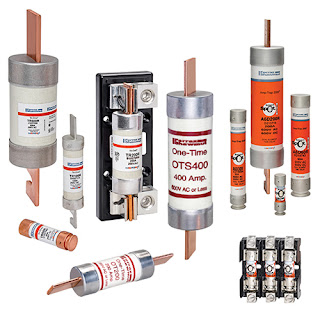Valves and Sensors for Automotive Cooling Systems
Burkert's modern modular valve and sensor technology enables cooling systems to be tailored to meet the requirements of a range of automotive applications. According to the company, production pressures from the automotive industry are resulting in increasingly stringent standards of quality for die-cast parts and, as a consequence, for the temperature control of die-casting tools. In this demanding environment, all processes must be exactly reproducible and traceable.
In addition, the cooling system must allow for modular expansion within the smallest possible dimensional envelope. Burkert's technology enables such exacting cooling systems to be achieved. The number, design and arrangement of the cooling channels in a die-casting mould are important for successful temperature regulation. Specifically, many small channels enable more precise temperature control than a smaller number of larger ones. However, the temperature of the coolant and the flow rate are decisive for absolutely precise and reliable temperature control.
Several independent and parallel cooling circuits ensure the more precise control of the cooling process, which improves the quality of the die-cast parts. Burkert's new development of proportional solenoid valves enables the implementation of multi-loop parallel-operating flow-rate regulation circuits. The advantage of these valves lies in the frictionless operation of their magnetic cores, ensured by special form springs that avoid stick-slip effects, according to the company. Burkert added that this is evidenced by an excellent response sensitivity (0.1 per cent of the final value), minimal reversal errors and good regulation performance.
The measuring range of the new proportional solenoid valves is 1:100, which makes it possible to adjust to even the slightest fluctuation in the flow rate by very precise corrective movements of the valves. In combination with the new ultrasonic flow-rate sensor, which has a measuring range of 1:200 and starts measuring at 0.06 litres per minute (or 3.6 litres per hour), it is possible to dose very small and precise flow rates to airflows. Complementing the performance of the internal valve design, modular valve bodies enable more compact systems by eliminating the requirement for conventional pipeline connections between discrete valves.
Instead, fluid connections are achieved by the direct joining of the valve bodies, which enables the design of compact, space-saving and robust valve systems for the cooling of die-casting tools. Since the inlet and outlet planes are separate in the new valve bodies, any redirection of the fluid flow is reduced in comparison with conventional valves. The new valves, therefore, also optimise the KV coefficient of flow value. Owing to the modular design, it is even possible to produce small batches cost effectively.
The applications range from single-valve solutions to complete control cabinet systems. A special controller is required for adjusting the quantity of coolant or air/water mixture - for example, to achieve an exact ratio of air to water. The new Econtrol 8611 controller, specially developed by Burkert for cooling systems, fulfils all of these requirements and is also available as a panel version with a 1/16 DIN cut-out for installation in an existing control cabinet.
In addition, the cooling system must allow for modular expansion within the smallest possible dimensional envelope. Burkert's technology enables such exacting cooling systems to be achieved. The number, design and arrangement of the cooling channels in a die-casting mould are important for successful temperature regulation. Specifically, many small channels enable more precise temperature control than a smaller number of larger ones. However, the temperature of the coolant and the flow rate are decisive for absolutely precise and reliable temperature control.
Several independent and parallel cooling circuits ensure the more precise control of the cooling process, which improves the quality of the die-cast parts. Burkert's new development of proportional solenoid valves enables the implementation of multi-loop parallel-operating flow-rate regulation circuits. The advantage of these valves lies in the frictionless operation of their magnetic cores, ensured by special form springs that avoid stick-slip effects, according to the company. Burkert added that this is evidenced by an excellent response sensitivity (0.1 per cent of the final value), minimal reversal errors and good regulation performance.
The measuring range of the new proportional solenoid valves is 1:100, which makes it possible to adjust to even the slightest fluctuation in the flow rate by very precise corrective movements of the valves. In combination with the new ultrasonic flow-rate sensor, which has a measuring range of 1:200 and starts measuring at 0.06 litres per minute (or 3.6 litres per hour), it is possible to dose very small and precise flow rates to airflows. Complementing the performance of the internal valve design, modular valve bodies enable more compact systems by eliminating the requirement for conventional pipeline connections between discrete valves.
Instead, fluid connections are achieved by the direct joining of the valve bodies, which enables the design of compact, space-saving and robust valve systems for the cooling of die-casting tools. Since the inlet and outlet planes are separate in the new valve bodies, any redirection of the fluid flow is reduced in comparison with conventional valves. The new valves, therefore, also optimise the KV coefficient of flow value. Owing to the modular design, it is even possible to produce small batches cost effectively.
The applications range from single-valve solutions to complete control cabinet systems. A special controller is required for adjusting the quantity of coolant or air/water mixture - for example, to achieve an exact ratio of air to water. The new Econtrol 8611 controller, specially developed by Burkert for cooling systems, fulfils all of these requirements and is also available as a panel version with a 1/16 DIN cut-out for installation in an existing control cabinet.



Comments